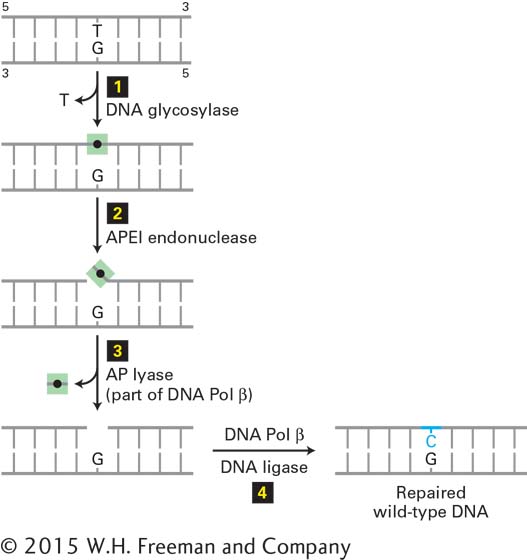
FIGURE 5- 35 Base excision repair of a T·G mismatch. A DNA glycosylase specific for G·T mismatches, which are usually formed by deamination of 5- methyl C (see Figure 5- 34 ), flips the thymine base out of the helix and then cuts it away from the sugar- phosphate DNA backbone (step 1), leaving just the deoxyribose phosphate (black dot). An endonuclease specific for the resultant abasic site (apurinic endonuclease I, APE1) then cuts the DNA backbone (step 2), and the deoxyribose phosphate is removed by an endonuclease, apurinic lyase (AP lyase) associated with DNA polymerase β, a specialized DNA polymerase used in repair (step 3). The gap is then filled in by DNA Pol β and sealed by DNA ligase (step 4), restoring the original G·C base pair. See O. Schärer, 2003, Angewandte Chemie 42:2946.
[Leave] [Close]